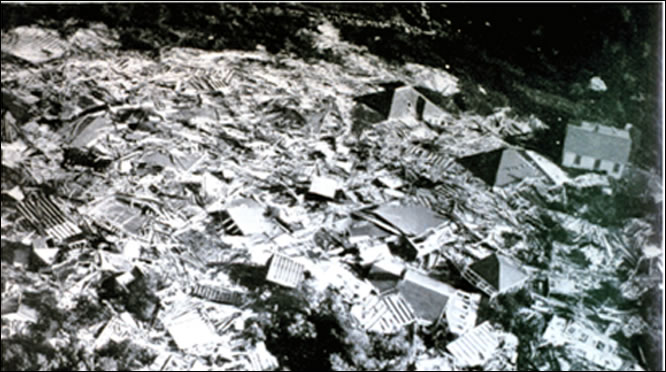
On this page you learn what types of flooding are typical in Connecticut and how do you protect yourself, your family and your home. You will also find out more about significant Connecticut floods. Finally, you'll find links to NWS offices that provide forecast and safety information for Connecticut, as well as links to our partners who play a significant role in keeping you safe
Torrential rains affected Connecticut from June 4 to 7, 1982. A large low pressure system moved up from the Gulf Coast and moved slowly up to the northeast United States, producing an exceptional amount of rainfall in the state. Up to 16 inches of rain fell in the region over 4 days, with the heaviest amounts occurring in south central Connecticut. Rainfall on Saturday, June 5, accounted for over half of that total when up to 10 inches fell.
Preceding conditions of soil moisture and river levels were hampered by a storm the previous week, which had left up to 4 inches of rain in many of the same areas.
The rainfall resulted in numerous floods and flash floods on smaller streams though the central part of the state. The larger rivers in Connecticut, the Housatonic and Connecticut, were not as greatly impacted because their headwaters in the more northern parts of New England were not impacted by heavy rain with this event. The smaller rivers, such as the Yantic, Farmington, and Shetucket, all received significant flooding as well as many smaller streams.
The floods caused the loss of at least 11 lives. Specific reports regarding some of the deaths from this event follow. According to the June 1982 NOAA National Climatic Center Storm Report, a woman drowned as a truck was swept into Roaring Brook in East Haddam. In Putnam a woman died as a pickup truck was swept away. In Salem, a woman died as she tried to escape her stalled truck. In New London, an 8 year old was drowned in his flooded basement. In Clinton, a pedestrian was swept away to his death.
One of the ironies of this event was that one of the facilities impacted by this event was the Northeast River Forecast Center. The NERFC offices, which at that time were in Bloomfield, were flooded for a day. Forecasters had to move to other locations to work.
Estimated damages from the flooding were more than $276 million (1982 dollars). Thousands of homes were damaged. Â The floods also caused significant damage to roads and bridges. This event caused over a dozen dam failures; additional dams required repairs due to the floodwaters.
 |
| Rainfall across southern New England during June 4-7, 1982 |
Learn More:
|
||||||